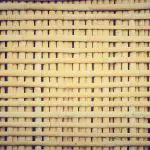I've always found myself wondering about satin's reputation for being high quality. It's got that luxurious feel and sheen that instantly makes anything look more sophisticated, whether we're talking about a fancy dress or elegant curtains. But, is it just about the looks, or is there more to satin that meets the eye? I think it's worth taking a closer look at what really makes satin stand out, from its unique weave to how it holds up over time. If you're curious like me, you'll probably want to stick around for a bit more insight.
Table of Contents
Key Takeaways
- Satin's luxurious feel and elegant drape signify high quality in fashion and decor.
- Its smooth and glossy finish adds sophistication and glamour to garments and furnishings.
- Versatile in use, satin can be woven from silk, polyester, or nylon, offering both luxury and practicality.
- The fabric's ability to hold vibrant colors well contributes to its high-quality appearance.
- Proper care and storage are vital to maintain satin's premium quality and luxurious texture.
Understanding Satin Fabric
Satin's got this unique weave that makes it super smooth and shiny, giving off that luxe vibe we all love. It's not just about looks, though. This fabric's got a way of draping that adds elegance and sophistication to anything it's made into, be it those dreamy wedding gowns or swanky evening dresses. And let's not forget the high-end home furnishings that scream luxury.
The secret behind satin's glossy finish and luxurious touch? It's all in the weave. This technique lets the yarns float over the fabric, creating that smooth, shiny surface that catches the light just right. It's like silk's less expensive cousin but doesn't skimp on giving off that rich feel.
What really cements satin's rep as a high-quality material is its versatility and the lustrous appeal. Whether it's fashion or decor, satin brings that premium look effortlessly. Plus, its association with luxury isn't just talk; its historical use in high-end fashion is proof enough. So, when you're eyeing that satin piece, know you're getting something special. It's not just fabric; it's a statement.
Types of Satin Explained
Let's dive into the different types of satin and what makes each one unique. When we talk about satin, we're really talking about a weave, not a material. This weave can include a variety of fibers, but silk satin fabrics are considered the crème de la crème for their luxurious feel and elegant sheen. Here's a quick rundown:
- Charmeuse Satin: This type rules the lingerie and evening gown game. It's lightweight, glossy, and drapes like a dream. Think of the smoothest, most opulent fabric sliding against your skin—that's charmeuse satin for you.
- Duchess Satin: Now, this is what bridal and couture dreams are made of. It's heavier than charmeuse, with a high sheen that screams luxury. Duchess satin is the go-to for anyone looking to make a grand entrance.
- Antique and Slipper Satin: I'm lumping these together because they both bring something special to the table. Antique satin, with its textured and heavy feel, is perfect for upholstery and draperies, adding a touch of class to any room. Slipper satin, on the other hand, finds its niche in elegant bedding and luxurious robes, offering a medium-weight option for those cozy nights in.
Each type of satin, from the glossy allure of silk satin fabrics to the durable charm of antique satin, plays a pivotal role in both fashion and home decor. Whether it's the pure silk charmeuse gracing your skin or the sturdy antique satin adorning your windows, understanding these types ensures you're making an informed choice for your luxury fabric needs.
Satin Vs. Sateen Differences
Diving into the world of textiles, it's crucial to distinguish between satin and sateen, as they offer distinct textures and uses. Let's break it down simply.
Satin and sateen, while often confused, stem from different weaves. The satin weave, utilized in creating satin, gives fabrics a glossy, smooth surface that's unmistakably luxurious. This sheen and luster make satin a go-to for those glamorous looks we all love. On the flip side, sateen, with its sateen weave, is all about that subtle shine but brings a softer feel to the table, thanks to its 100% short staple cotton makeup.
Satin isn't picky about its fibers; it can be silk, polyester, or nylon, making it versatile in use and appearance. Sateen's durability and comfy feel make it a dream for bedding and daily wear garments. Both fabrics have their playgrounds, from high-end fashion to cozy home interiors, each shining in its unique way.
Satin Fabric Weaving Techniques
Exploring satin fabric weaving techniques unveils the craftsmanship behind its glossy finish. The magic lies in the satin weave technique, where masterful manipulation of floating yarns over weft yarns results in that signature shine. It's this precise method that gifts satin fabric its luxurious appearance, making it a go-to for those after a bit of elegance.
Here's a quick breakdown of what makes satin weaving stand out:
- Lengthy Floating Yarns: These are the heroes behind satin's smooth surface and sheen. They catch the light just right, offering that sought-after luster.
- Variety of Weaves: From 4 to 8 harness satin weaves, each brings something unique to the table. Whether it's the drape, texture, or durability, there's a satin for every need.
- Versatility: Satin isn't just about looks; its weaving technique makes it incredibly adaptable. Whether for flowing evening wear or luxurious drapes, satin fabric can do it all.
Understanding these weaving techniques, it's clear why satin holds a special place in the world of textiles. Its combination of drape, versatility, and that luxurious appearance makes it endlessly appealing.
Benefits of Choosing Satin
Satin's luxurious feel and elegant drape make it a top choice for high-quality fashion and home decor. Let me tell ya, when it comes to adding that touch of sophistication and glamour, nothing beats the smooth and glossy finish of satin. It's like the fabric just knows how to make everything look more upscale.
Now, a lot of folks might mix up satin and silk, but here's the scoop: satin can be made of pure silk or a blend, which gives it that versatile edge. It's this flexibility that makes satin a popular choice for designers aiming to craft pieces that stand out. I mean, have you ever seen evening gowns made of satin? They're the epitome of elegance.
What's really cool about choosing satin is how it elevates your project or garment. Whether it's couture garments or chic home decor, the use of satin is a game-changer. Its ability to hold colors well also means you get vibrant hues that don't fade into the background. So, if you're looking to make a statement or just add a bit of luxury to your life, satin's the way to go.
Caring for Satin Garments
After exploring the quality of satin, let's talk about how to keep it looking great.
I've found that washing, drying, and storing your satin pieces the right way makes a huge difference.
We'll cover the best practices for each, ensuring your satin stays luxurious.
Washing Satin Correctly
Caring for satin garments requires a gentle touch, starting with hand washing them in cold water to avoid damage. Here's how I keep my satin looking its best:
- Wash: I always use mild detergent and cold water. Hot water's a big no-no because it can ruin the delicate fibers.
- Handle with Care: I never wring or twist my satin. This fabric's like that friend who's a bit high maintenance but totally worth it.
- Air Dry: Laying it flat on a clean surface is the way to go. It keeps the texture smooth and the shape intact.
For those pesky stains that just won't budge, I've learned that sometimes it's best to call in the pros and opt for dry cleaning. And when it comes to ironing, low heat and inside out is my mantra to prevent any mishaps.
Drying Techniques for Satin
When it comes to drying satin, air drying is your best bet to keep it looking top-notch. Seriously, tossing it in the machine or wringing it out like an old rag? Bad idea. That's just asking for trouble—think damage and shrinkage nightmares.
Instead, lay it flat on a clean surface. This way, you're not messing with the fabric integrity or letting it stretch into some weird shape. And when we're talking about natural silk satin, even more care is needed. Dry cleaning becomes your go-to. It's all about keeping that luxurious feel and appearance intact.
Storing Satin Properly
Now that we've covered how to dry your satin to keep it pristine, let's talk about the right way to store it. You've got to keep those garments looking sharp, right? Here's the lowdown:
- Choose a Cool, Dry Spot: Always store satin in a place away from direct sunlight. This helps in preventing fading and keeps those colors vibrant.
- Opt for Gentle Support: Skip the wire hangers. Instead, use padded hangers or fold your satin neatly. This step is crucial to avoid stretching or creases that can ruin the fabric's smooth look.
- Protect from Dust and Damage: Store satin garments in breathable bags or cotton pillowcases. It's a simple move that shields them from dust and moisture, keeping them in top-notch condition.
There you have it, how to store your satin like a pro. Keep these tips in mind, and those garments will thank you!
Frequently Asked Questions
Which Is Better Quality Satin or Silk?
I'd say silk's better quality than satin. It's all about the natural fibers making silk more durable and breathable. Plus, it's hypoallergenic, which means a lot for comfort and overall better for your skin.
Is Satin Considered Luxurious?
I definitely think satin's considered luxurious. Its smooth, shiny surface and that soft feel make it a top pick for high-end fashion. Plus, its versatility in both clothing and home decor really seals the deal.
Is Satin Good Quality?
I've found that satin's quality really depends on its weave and fiber content. When it's made well, with tight construction and high-grade fibers like silk, it's definitely high quality, luxurious, and super durable.
Does Satin Look Cheap?
I've noticed satin doesn't always look cheap. It really depends on its quality and how it's made. High-quality satin shines and feels luxurious, unlike the cheap kind that's dull and rough to the touch.
- Nanotechnology: The Future of Fabric Performance - July 24, 2024
- Upcycled Fabrics: Turning Waste Into Fashion - July 24, 2024
- Biodegradable Fabrics: A Sustainable Choice - July 24, 2024







